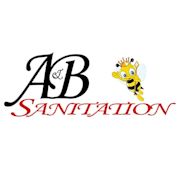Search results
Aug 7, 2023 · How Septic Systems Work. A typical septic system consists of a septic tank and a drainfield (or soil absorption field). The septic tank digests organic matter and separates floatable matter (e.g., oils and grease) and solids from the wastewater. In conventional, or soil-based systems, the liquid (known as effluent) is discharged from the septic ...
Septic tanks are made from concrete or heavyweight plastic and typically have a capacity of 1000 to 2000 gallons. There are two chambers in the tank, separated by a partial wall. Waste flows from the house into the larger chamber. Solids settle to the bottom, and liquids make their way over the partial wall into the smaller second chamber.
Septic systems are great at breaking down waste, but some items don’t belong. For instance, sanitary products, baby wipes, grease, dental floss, and other items that are flushed down drains can disrupt the harmony in a septic system. For the most part, these items float over the top of the other waste in a layer known as a “scum layer.”.
Dec 4, 2018 · Septic systems include a wide range of individual and cluster treatment systems that process household and commercial sewage. Septic systems are also called: private sewage systems. The various types of decentralized wastewater treatment, if properly executed, can protect public health, preserve valuable water resources, and maintain economic ...
Sep 23, 2016 · A typical septic system consists of a septic tank and a drainfield, or soil absorption field. The septic tank digests organic matter and separates floatable matter (e.g., oils and grease) and solids from the wastewater. Soil-based systems discharge the liquid (known as effluent) from the septic tank into a series of perforated pipes buried in a ...
Apr 24, 2015 · EPA’s Decentralized Partnership Renews for 2023. EPA’s Decentralized Wastewater Management Memorandum of Understanding (MOU) Partnership is designed to improve the overall performance and management of decentralized systems. The Partnership, renewed every 3 years, ensures collaboration at the national level to improve decentralized ...
1: Conventional System. This is the system you’ll usually see at a single-family home or a small business. In a conventional system, your waste goes to a septic tank. The tank feeds to a distribution box that branches into multiple runs. Each of these runs allow the liquid to drain into the surrounding earth.





